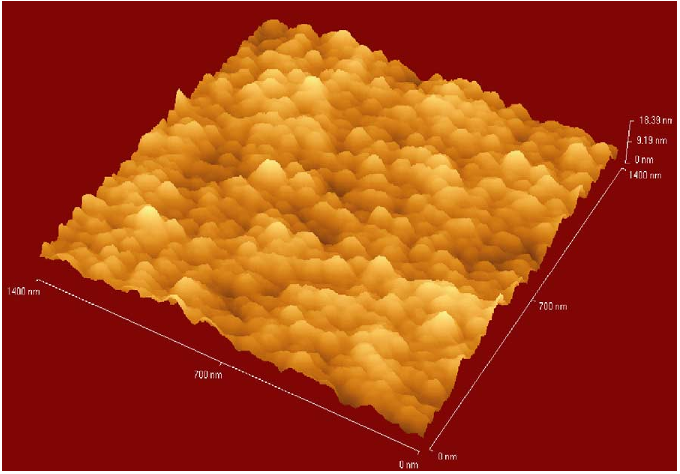




read more











The r.m.s. surface roughness of gold wires is about 16 nm, which is expected to be low enough to make it suitable for atom trapping applications.
For their applications a very smooth mirror surface, which is crucial for realising the optics for the laser cooling of the atom clouds [11].
The gold substrate with the template was the working electrode with a large area platinum gauze counter electrode and a custom-made saturated calomel reference electrode (SCE).
the surface of gold wires has to be very smooth since roughness of the surface may cause a non-homogeneous current distribution.
4. The four central wires, above which atom clouds can be trapped, were 50 and 100 m wide, 7 mm long and separated by a gap of 30 m.
electrochemical deposition is ideal for the production of thin supported layers for applications such as photonic mirrors since the surface of the electrochemically deposited film can be very uniform [7].
a thin Au–Cr layer (40, 300 nm) is evaporated and photolithographically patterned using a standard thin photoresist (SPRT 518) in order to define electroplating areas for gold wires, to provide electrical isolation between gold mirrors, gold wires, and contact pads.
Using a simple atom chip based on a single macroscopic wire, the authors have successfully produced Bose–Einstein condensates of 87Rb containing 5 × 104 atoms.
Once the photoresist moulds were fabricated, electroplating of Auwas performed without a hardbaking the photoresist since this can cause SPR 220-7 to reflow.
This is important for uniform current distribution which is required to obtain a high current density in the wire necessary for an atom guide.
One problem with the described electroplating is that the achievable smoothness is not sufficient for the gold mirrors without further optimisation of the electroplating solution using special additives such as brighteners.
This thickness was achieved with a single layer coating to get good contact between the mask and the wafer the authors had to remove the photoresist edge bead which was formed during the low-speed coating.
electrochemical deposition produces a high density of the deposited material in the holes of the template (mould) and leads to volume templating of the structure as opposed to templating of material.